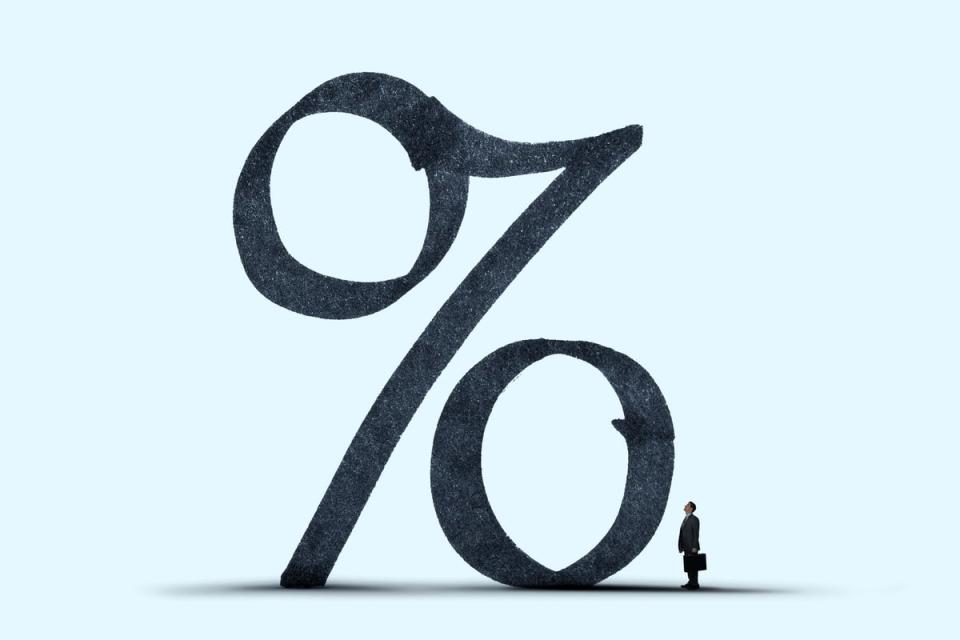We’ve been waiting over a year for the Federal Reserve to make its next move in interest rates. It looks like the time has finally arrived.
After a historic rate-raising campaign in 2022 and 2023 to help curb inflation, the Fed has kept rates steady since August of last year. Chairman Jerome Powell said the Federal Open Market Committee (FOMC) is waiting for data to confirm whether the economy is on a trajectory toward its 2% annual-inflation target. At the FOMC’s most recent meeting in July and its Jackson Hole conference in August, Powell indicated a strong likelihood of rate cuts in September.
While the Federal Reserve is concerned with its dual mandate of steady inflation and full employment, its actions can have significant impacts on investors. While markets are always forward looking, having priced in expectations, there’s still a long way for the Fed to cut rates, according to its own projections. That means there are still opportunities for investors.
These two exchange-traded funds (ETFs) look like great options ahead of the impending rate cuts from the Federal Reserve.

1. A small-cap value fund
Smaller companies are much more sensitive to interest rates than larger companies. An interest-rate cut provides significant relief for small companies carrying debt. That’s especially true if that debt is a floating rate debt instead of a long-term corporate bond, which is more common among smaller companies.
It’s not just money-losing, early-stage, small-cap growth stocks that rely on debt. Many well-established and profitable companies use debt to maintain liquidity and fund future growth. And those companies could provide one of the best investment opportunities as the Fed cuts interest rates.
Small-cap value stocks have historically produced better returns than any other segment of the market over the long run. However, they’ve severely lagged large-cap stocks over the past few years as the Fed has raised rates and tightened the money supply. That trend may be about to reverse as the Fed lowers rates.
One of the best ways to invest in small-cap value stocks is with the Avantis U.S. Small Cap Value ETF (NYSEMKT: AVUV). Technically an actively managed fund, it aims to outperform the Russell 2000 Value Index. The fund selects stocks based on book value and profitability, investing in hundreds of small-cap stocks based on its criteria. When a stock no longer meets the criteria, it’s sold and new stocks are added if and when they do meet the criteria.
This active selection and passive implementation worked out extremely well while keeping the expense ratio of the fund relatively low. Investors pay just 0.25% of assets per year, slightly above small-cap, value-stock index funds but well below the average actively managed fund.
There are several other factors favoring small-cap value stocks right now, including low valuations relative to large-caps and a return to growth in money supply (which will accelerate as interest rates come down). Buying the Avantis ETF is one of the smartest ways to play the Fed’s upcoming rate cuts.
2. A long-term Treasury bond fund
Another way to invest in lower interest rates is to buy government bonds. Locking in the currently high rates could yield strong results as the government issues new bonds at lower rates. When that happens, the value of existing bonds will rise such that the effective yield equals the yield of equivalent-duration bonds.
Put simply, a long-term Treasury bond fund will increase in value as rates come down. One of the best ETFs for long-term Treasury bonds is the Vanguard Extended Duration Treasury ETF (NYSEMKT: EDV).
The fund buys U.S. Treasury STRIPS, which are zero coupon bonds bought at a discount to face value. The bonds increase in value as they near maturity. The Vanguard fund’s bond holdings have an average effective maturity of 24.6 years. That long duration makes the fund far more sensitive to swings in interest rates. But if rates go down, its holdings will go up significantly in value.
As mentioned, the market already expects a rate cut in September. That’s already priced into bonds. Buying the Vanguard long-term Treasury fund is based on further rate cuts and expectations that rates will remain low for an extended period going forward. That’s very hard to predict, but it’s reasonable to expect the Vanguard fund to perform well over the next few years as the Fed looks to lower rates at a reasonable rate.
The Vanguard fund charges an expense ratio of just 0.06%, relatively low compared to other long-term Treasury bond funds. If you think rate cuts will stick, this fund could pay off very nicely over the long run.
Should you invest $1,000 in American Century ETF Trust – Avantis U.s. Small Cap Value ETF right now?
Before you buy stock in American Century ETF Trust – Avantis U.s. Small Cap Value ETF, consider this:
The Motley Fool Stock Advisor analyst team just identified what they believe are the 10 best stocks for investors to buy now… and American Century ETF Trust – Avantis U.s. Small Cap Value ETF wasn’t one of them. The 10 stocks that made the cut could produce monster returns in the coming years.
Consider when Nvidia made this list on April 15, 2005… if you invested $1,000 at the time of our recommendation, you’d have $656,938!*
Stock Advisor provides investors with an easy-to-follow blueprint for success, including guidance on building a portfolio, regular updates from analysts, and two new stock picks each month. The Stock Advisor service has more than quadrupled the return of S&P 500 since 2002*.
*Stock Advisor returns as of September 3, 2024
Adam Levy has positions in American Century ETF Trust-Avantis U.s. Small Cap Value ETF. The Motley Fool has no position in any of the stocks mentioned. The Motley Fool has a disclosure policy.
2 No-Brainer ETFs to Buy Before the Fed Cuts Interest Rates was originally published by The Motley Fool
Source Agencies


